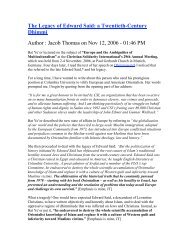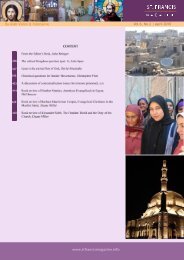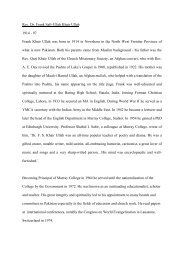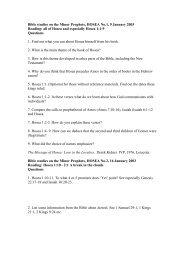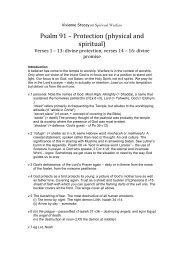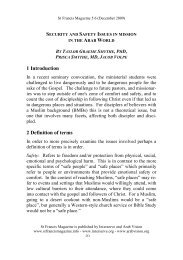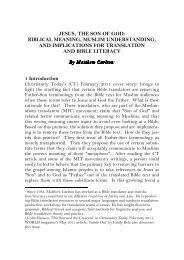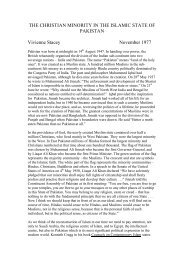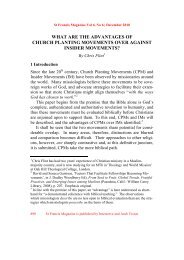Untitled - St.Francis Magazine
Untitled - St.Francis Magazine
Untitled - St.Francis Magazine
You also want an ePaper? Increase the reach of your titles
YUMPU automatically turns print PDFs into web optimized ePapers that Google loves.
<strong>St</strong> <strong>Francis</strong> <strong>Magazine</strong> Vol 8, No 2 | April 2012 of the faith (Heb 12:1-‐2) like Moses who ‘persevered by seeing him who is invisible’ (11:27). 144 11. Paralysis: In the wilderness sojourn there were those who were paralyzed with fear to believe they could enter the Promised Land. The new covenant Hebrews are addressed about their paralysis and the need to “strengthen… the weak knees…” (Heb 12:12-‐13). 145 William Manson comments on this dynamic as a means of retarding the spiritual growth of the Hebrews: “…it is possible that the danger to their faith lay not in a return to Judaism as such, but in a retardation of their Christian progress by factors having their causes in the Jewish element in their Christianity, in other words, by an undue assertion of their Jewish-‐Christian inheritance.” 146 Might an undue preoccupation with one’s old religion in this modern day have the same effect? 12. Community: For the Hebrews, as deSilva mentioned, “The liminal state involves both “humiliation and ordeal, but also...sacrality and power.” 147 The desert was the place of consummate danger, but also the place of consummate provision. It was the place of the greatest temptation to despair, but also the place of greatest reason to be encouraged. Might systems that avoid liminality, in so doing, actually avoid all of the blessings of this state? Might this avoidance actually cripple the health of the global church, by trying to remove some from the blessings of this liminal state and so crippling it as a community? 144 See S.D. Mackie, “Heavenly Sanctuary Mysticism in the Epistle to the Hebrews,” The Journal of Theological <strong>St</strong>udies, 62:1 (2011), pp. 77-‐117. 145 P. J. Arowele in his “The pilgrim people of God: an African's reflections on the motif of sojourn in the epistle to the Hebrews” is convinced that this reference to limbs and paths is derived from a pilgrim motif in Hebrews. In the Asia Journal of Theology, 4:2 (1990), p. 443. One could link this into “The Way” title for Christians in Acts, as those who are on the pilgrim way are getting enfeebled. 146 William Manson, The Epistle to the Hebrews (London: Hodder and <strong>St</strong>oughton, 1951), pp. 15-‐16 as cited by Bauckham, p. 197, fn 17 147 deSilva, Perseverance, pp. 70-‐71 267


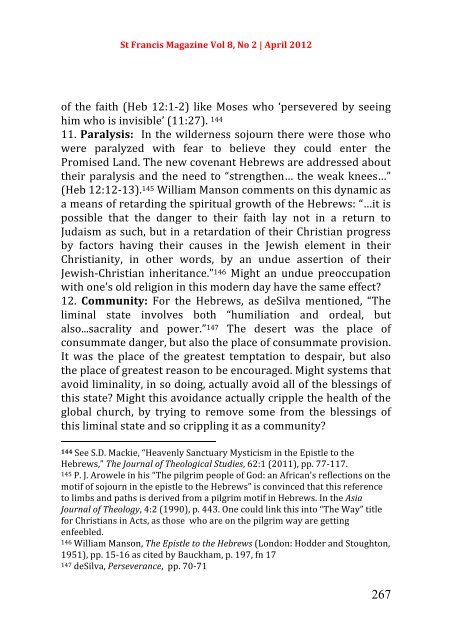

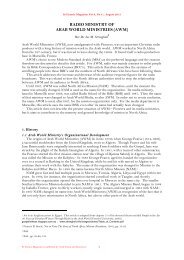
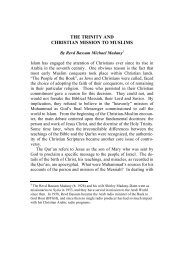
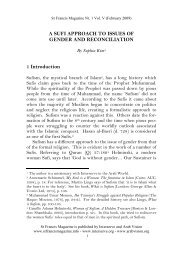
![Reflections on Surah Fatiha and the Lord's Prayer[1] - St.Francis ...](https://img.yumpu.com/49377951/1/184x260/reflections-on-surah-fatiha-and-the-lords-prayer1-stfrancis-.jpg?quality=85)
